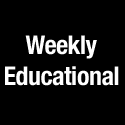I have been working with students who struggle in the traditional classroom setting for about fifteen years.
I started working with high school students who were served by Special Education Services--which mostly meant me. I traveled to different classrooms with the students. My job was to get students to connect to the class, help them if they didn't understand, cajole, encourage, remind... yet, many of them continued to fail.
During my second year working at the high school, feeling like I was failing the students as they continued to fail classes, I attended a free workshop on ADD. One of the guest speakers, Judy Schwarz, described teaching adult non-readers to read---in short, helping all ages of students master all sorts of learning tasks--reading, writing, math, organization, time management, etc. Hearing Judy's stories captured my attention. Wait, I didn't see learning happening like this!
So, I began my training in educational therapy at Another Door to Learning in Tacoma with Judy and her staff. First, I learned to do "Assessments" for different learning profiles. What strengths does this person have? What processing pieces work well--auditory, visual, motor, language, tactile, etc? How does this person make sense of the world? All of a sudden, a whole world of learning diversity opened up around me.
Then, I learned how to design and deliver individualized, direct instruction using some typical and non-typical methods, along with lots of multi-sensory activities to tie the learning together. All of a sudden, the process of learning opened up for my students! They began being successful, and could build on their successes. Failure could return to its rightful place as an exploratory step in learning, not an individual label of "stupid."
Basically I was trained in using a "medical model" of learning. Something is wrong, here’s what it is, and here’s how to fix it. This moved us away from interpreting learning disabilities as just “laziness” or “moral ineptitude” on the part of the student, and many times, the parent. Yet, over the years, as I have watched individuals develop their skills, and make substantial progress toward their learning goals, I have changed my idea of the "normal" in learning. Normal is different! There is no normal!
We all have areas in which we process more easily. Some like to listen, some like to move, some like to build, some like to daydream, some like to draw, some like to talk, some only hear music... As a culture, we enjoy the fruits of learning diversity, but as an educational system, we've missed the orchard.
What if we don't have to "label" students any more to provide "services." What if we were curious about how many different ways each of us makes sense of the world around us? What if we focus on each person's unique set of strengths, while providing all sorts of avenues for their success in areas that are more difficult? What if we spent the energy we expend writing up Individualized Education Plans (IEP's) just helping all students be successful in their learning process?
Intelligences can be developed. I know this on a profound level from years of facilitating learning with struggling students. Language-based learning disabilities, the bulk of learning difficulties, can be ameliorated with universal design technologies such as speech-to-text and text-to-speech software. Classrooms no longer need to pose barriers for students who struggle with reading or writing. What are we waiting for?
Here is the first part of a presentation I gave at the local high school at the end of April. Still working on the technology!
Wednesday, May 14, 2008
Busting the Myth of Normal
Subscribe to:
Post Comments (Atom)







No comments:
Post a Comment